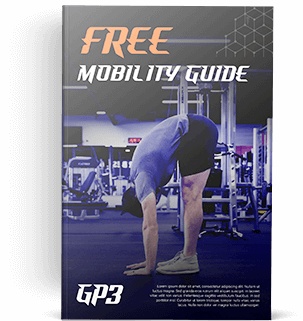Key Points:
1. Meditative practices provide one of the best strategies for handling discomfort.
2. However, there are a ton of misconceptions about what meditation is.
3. Put simply, meditation is a focus on “being” rather than “doing.” It’s definitely not about trying to stop thinking!
Estimated Reading Time: 4-8 Minutes
Last week, we briefly touched upon what’s sometimes referred to as, “befriending discomfort.” This is an interesting way to look at uncomfortable situations, because most of us have the exact opposite instinct. When something we’d rather not face arises, our first response is generally to try to block it out or get rid of it as quickly as possible.
To practice handling discomfort, meditation can be quite useful, but somewhat paradoxically, engaging in it can also sometimes cause uncomfortable feelings and sensations to surface. More accurately, it can allow these feelings and sensations to make their presence known. We’re going to delve into this in much greater detail throughout today’s piece, but first I’d like to clear up some misconceptions about meditation.
What even is meditation?
First, to quote one of my favorite modern spiritual teachers, Rupert Spira, “Meditation is not what we do; it is what we are.” If this doesn’t make sense at first, bear with me here. What he basically means is that to meditate is simply “to be.” If you’re sitting on a chair or lying down on the floor, “just being,” actively doing nothing else, you’re meditating.
“Hang on…” you may be asking yourself, “Am I ever not, ‘just being?’”
Very astute! Well done.
Understood from this lens, we are never not meditating. Now, I grant this may sound a bit abstract. So, for the ease of understanding, we can think of meditation as “meditative practices” to make them sound more like something we would “do.” I simply wanted to make the distinction right away so that we don’t get caught up in pointless arguments about whether there is a “right” or “wrong” way to meditate, or if some ways are better than others. There isn’t, and they’re not. Remember, all you need to do to meditate is be, and you’re never not being.
Seated Meditation
Some traditions, like certain sects of Zen Buddhism, place a heavy emphasis on what is called zazen, or “seated meditation.” In general, that’s probably what most people think of when they hear the word meditation. They envision someone sitting down, legs crossed, palms upright with hands in a particular position, perhaps chanting “OM” to themselves while blocking out all thoughts.
Here’s the thing. All of these can be part of meditation, but none of them have to be. Let’s focus on the last part in particular, because it’s one of the biggest meditation misconceptions out there.
The “point” of meditation, if there is one, is not to block out thoughts. This is vital to understand, because many people’s initial experiences with meditation go something like this:
- Curious to see what it’s all about, or desiring some of the many benefits it can offer, we decide to “give meditation a try.”
- We sit quietly, and thought after thought won’t stop running through our minds.
- Believing the point of meditation is to be free of thoughts, we become frustrated.
- So, we try harder “not to think,” or to “block out thoughts.”
- This obviously doesn’t work, so we feel like we failed and decide that meditation is “not my thing.”
Meditation and Thought
Let’s be clear. Thoughts during meditation are not a problem at all, and in no way indicate failure. It’s not actually possible to fail at meditating. Instead, thoughts are simply to be recognized as just what they are…thoughts. They’re seen to come and go, and allowed to do so. There is no need to believe them, engage with them, or identify with them.
Now, if you don’t realize You Are Not Your Thoughts, this can become scary or uncomfortable, especially if darker thoughts arise. But remember, thoughts are like reflexes. They show up automatically, in response to a particular set of infinite possible combinations of stimuli. They don’t ask permission to be there, and “having” a particular thought definitely does not say anything about you. So, there’s no need to try to get rid of them.
One of the best analogies I’ve heard on this topic goes something like this:
Think of your mind as a house. If an intrusive or unwanted thought comes along, let it in. If you invite it inside for a figurative cup of coffee, it’ll stay for a while and then leave of its own accord. You won’t have to do anything. If however, you lock the front door in an attempt to keep it out, it’ll try to sneak in through the windows, down the chimney, or under the floorboards.
So, we can move past the idea of needing to control thought. In general, one of the best parts of meditation is relinquishing the need to control anything. And speaking of letting go, let’s take this opportunity to leave behind some other common meditation misconceptions.
What else is meditation “not.”
One of my current favorite teachers on this subject is an American M.D. named Angelo DiLullo. Possibly due to his background in Western medicine, he has an incredibly direct style and avoids approaching spirituality with the new-agey fluff that many find off-putting. In his book, Awake, he provides a comprehensive list of everything meditation is not. Rather than risk losing anything by paraphrasing, here’s the list in its unaltered entirety:
Natural meditation is best defined by what it is not:
- It’s not a practice.
- It’s not a technique.
- It’s not something you can do wrong.
- It’s not a means to an end.
- It’s not focusing your attention in a certain way.
- It’s not about trying to witness something.
- It’s not about trying to label something.
- It’s not trying to create a state.
- It’s not trying to relax.
- It’s not trying to heal the body, mind, or heart.
- It’s not something you have to get better at.
- It’s not something meant to cause enlightenment.
- It’s not trying to make anything happen.
- It’s not trying to stop something from happening.
- It’s not trying to find out who you are.
- It’s not trying to forget who you are.
- It’s not trying to get rid of anything.
- It’s not trying to gain anything.
This is quite an exhaustive list. But, I’m going to add another one that he didn’t mention that I’ve seen referenced multiple times from different authors.
“It’s not about how long you stay in it.”
This last one is a common trap many people, myself included, fall into. We tend to think that we’re “getting better” at meditation, or “making progress” when we spend longer and longer periods of time in seated contemplation. This isn’t true. You can’t actually “get better” at just being.
Again, it’s crucial to keep in mind that techniques, mental states, physical sensations, and relaxation, can be part of meditative practices, but none of them are required.
Do we usually focus on being or doing?
Perhaps the above list led you to ask yourself, “Okay, so if meditation is not any of those things, what even is it? Further, what’s the point?”
Well, remember, to meditate is simply to be. Alan Watts calls it “sitting just to sit.”
Even if we’re never not “being,” our focus is almost always exclusively on doing rather than being. This isn’t inherently wrong or bad. Life requires both. However, when “doing” dominates and we completely overlook “being,” this can be a major source of unhappiness. To quote Spira again, “When doing slows down, the thinking that is at its origin is exposed; when thinking dissolves, the feeling that is behind it is uncovered; when feeling subsides, the Being that is at its heart is revealed.”
Meditation offers us the rare chance to focus exclusively on being. This allows us to access some of the peaceful stillness that is inherent to simply being. Whether or not this has beneficial effects in our life of “doing” is beside the point, but most people find that it certainly does.
Look, I won’t pretend to be an expert here.
My only credential is that I have engaged in various meditative practices, daily, for nearly the last two and a half years. And yet, in that time frame, I’ve fallen for nearly every single trap in the “What Meditation is Not” list. There is a ton I don’t know, and I’m still learning every day. All I know for sure at this point is that I typically find my morning meditation routine quite peaceful and enjoyable. Then again, sometimes I reflexively believe the thoughts that say, “This is boring,” or “Is something supposed to be happening?” Sometimes I recognize these as simply “thought noise” in the moment, and other times I don’t.
So, my aim here is simply to give you some reassurance if meditation is something you decide to explore. There’s no need to spend any time worrying about whether you’re doing it properly or if you’re using the “correct” technique, body position, or breath cadence. None of that matters.
Even when it’s uncomfortable, try sitting with whatever arises, without trying to get rid of it. Simply focus on being. You might be pleasantly surprised by what you find.

